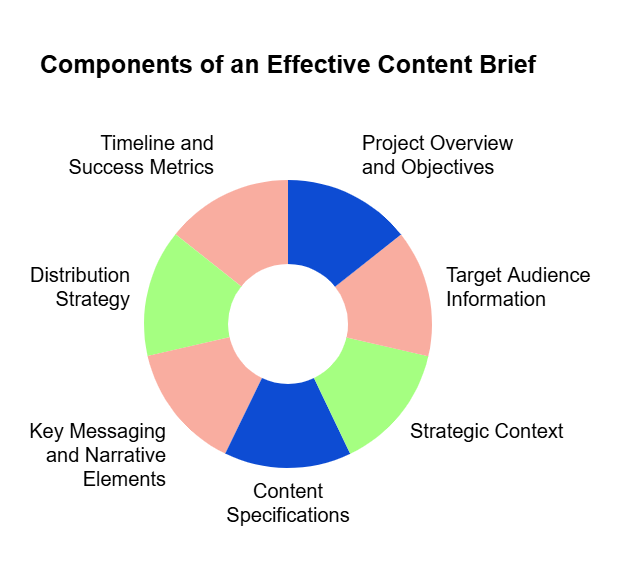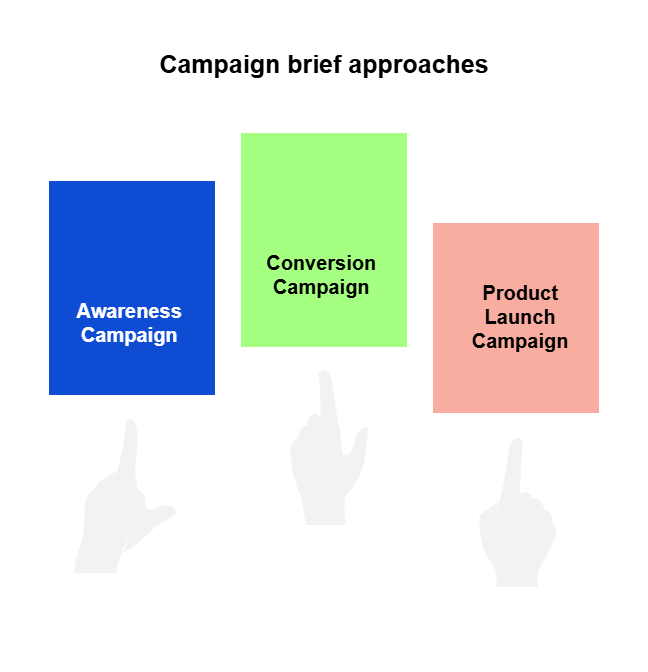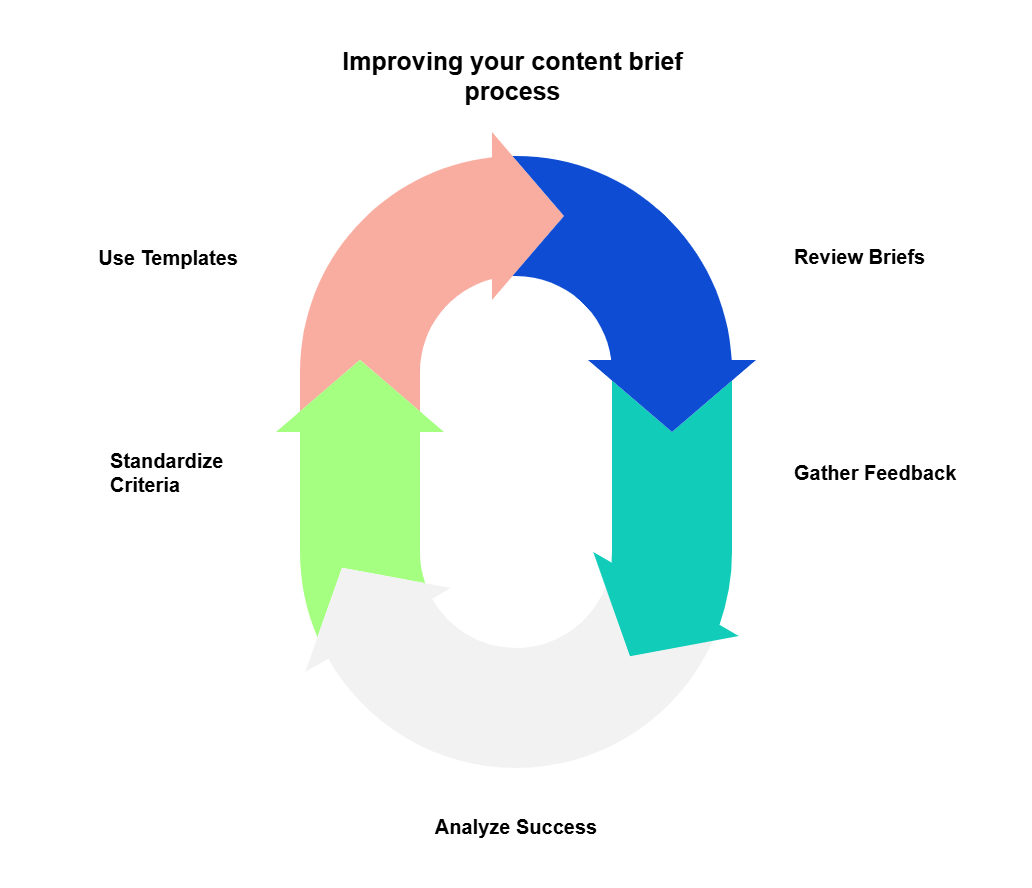Content briefs best practices that transform strategy into results
Content briefs are the unsung heroes of successful marketing campaigns. Done right, they keep your marketing teams aligned, your creative processes flowing, and your results worth talking about.
With teams spread across time zones, campaigns straddling a dozen different channels, and everyone fighting for attention, a well-crafted content brief is essential. It bridges the frustrating gap between big-picture strategy and actual execution and is a must-have if you want your vision to resonate with your audience..
What is a strategic content brief?
A strategic content brief is a document that provides clear direction and guidelines for creating specific content assets. It’s a roadmap for writers, designers, and other content creators that outlines exactly what needs to be produced, why it matters, and how it should be executed.
Think of it as a project blueprint that connects content creation directly to broader marketing goals and audience needs. To learn more about the fundamentals, check out What is a content brief?, an article by MarketMuse.
A strategic content brief isn’t just admin work but rather a powerful tool that drives team alignment and business growth. It connects everything you're doing directly to your business goals, and it guides where you spend your time and money. Without that direction, content creation becomes a messy, inconsistent money pit that doesn't achieve your organization's goals.
Essential elements of an effective content brief

1. Project overview and clear objectives
Effective content briefs start with specific, measurable goals connected to broader business objectives. Vague directives like "create engaging content" lead to directionless work. Instead, define precise aims like "develop a comprehensive guide that positions us as thought leaders for enterprise IT decision-makers." This clarity prevents headaches later and supports proper marketing objective-setting.
2. Detailed target audience information
Go beyond surface-level descriptions like "millennials" or "decision-makers." Include detailed persona information based on actual research data: demographics and psychographics, pain points and motivations, and where they are in their customer journey. The most compelling content feels like it's reading your mind, and that only happens when creators truly understand the audience. Surface-level audience descriptions lead to generic, forgettable content that fails to connect with actual humans.
3. Strategic context, not just commands
Your content creators need background to produce relevant material. That includes current industry trends, competitor analysis, and previous content performance data. This context helps writers understand what to create and why it matters within your larger marketing ecosystem. Without sufficient background information, creators lack the context needed for strategic content development.
4. Content specifications
Include format requirements, word count expectations, and technical needs. This is where to cover all the practical stuff that makes content production run smoothly. SEO requirements should specify target keywords (primary and secondary), search intent analysis, and specific guidelines for creators to follow.
This detailed guidance helps your teams create material with strong organic search potential while following SEO principles. For a comprehensive walkthrough of what makes a successful content brief, explore these 5 elements of a highly successful content brief.
5. Key messaging and narrative elements
Clearly define the core message and supporting points that matter most. Include brand voice characteristics and tone, covering language patterns, terminology preferences, emotional tone, and stylistic conventions that reflect brand personality. Avoid vague directives like "professional but friendly." Instead, provide specific examples that illustrate brand voice expectations.
Some organizations reference existing content that exemplifies their preferred tone, while others develop comprehensive style guide documentation. For brand storytelling, articulate narrative frameworks and thematic elements explicitly, helping content creators understand the deeper narrative structure that should inform their work.
6. Distribution strategy
Specify where the content will live and any platform-specific requirements. Each platform has its own quirks and requirements that might affect how the content gets created. Explain how the content fits into broader marketing campaigns to ensure your teams maintain strategic direction despite the fragmented nature of digital marketing.
7. Timeline, workflow, and success metrics
Include details on deadlines, the review process, and staff members involved in publishing. Define specific key performance indicators (KPIs) that connect back to your marketing objectives. How will you measure if this content worked? This critical step links the work directly to your business goals and helps guide where you spend your time and money.
The strategic value of content briefs
Content briefs are a critical connection point between high-level marketing strategy and day-to-day content creation. They translate abstract marketing goals into specific, actionable guidance for creators, they ensure content investments align with business priorities rather than creative whims, and they provide the rationale behind content requests, so creators understand why certain elements matter.
Content briefs as your strategic GPS
A solid content strategy requires coordination across numerous digital touchpoints:
Briefs guide content creation across websites, social media, email campaigns, and other channels. For instance, a healthcare company's brief for a new patient education initiative would specify how the core message adapts across their blog, social channels, email nurture sequence, and in-office materials.
They prevent the common problem of creating disconnected content assets that fail to build upon each other. Without briefs, you risk creating redundant content that doesn't create a cohesive customer journey.
A single brief might outline how a core topic should be treated differently across multiple platforms; for example, a technical whitepaper's key insights can be transformed into bite-sized social media content or an interactive assessment tool.
Marketing campaign alignment

Different campaign types require different brief approaches:
Awareness-stage briefs emphasize educational value and thought leadership. For example, if you're launching a thought leadership campaign about cybersecurity trends, your brief might prioritize industry statistics, forward-looking analysis, and positioning your experts as visionaries — without pushing product features.
Conversion-focused briefs highlight specific product benefits and clear calls to action. These briefs would include details on pain points your solution addresses, competitive differentiators, and specific conversion paths you want readers to follow.
Product launch campaigns need briefs focused on features, benefits, and differentiation. For instance, a SaaS product launch brief would detail which features to emphasize, how they differ from competitors, and which customer problems they solve most effectively.
Brand storytelling consistency
Strong brand storytelling requires consistency and strategic messaging alignment.
Briefs should articulate storytelling components explicitly, including the problem-solution narrative structure that resonates with your audience.
They might specify narrative frameworks (e.g., positioning the customer as the hero facing challenges, with your brand as the guide). Patagonia, the outdoor apparel and gear company, consistently positions its customers as environmental advocates with stories to tell, with their products as durable tools for adventure that align with deeper values. No doubt that narrative framework is explicitly defined in their content briefs.
The most memorable brands tell consistent stories across every touchpoint. This consistency comes from well-crafted briefs that establish character voices, narrative arcs, and thematic elements.
Cross-functional collaboration and resource allocation
Content briefs get staff from different teams on the same page:
- They provide a shared reference point for marketing, creative, product, and technical teams.
- Briefs establish clear ownership and accountability for different aspects of content development.
- They reduce misunderstandings by capturing input from various stakeholders in a single document.
And they help marketing leaders make smart decisions about where to invest limited resources:
- They force prioritization of messaging points rather than trying to communicate everything.
- Briefs help identify which content projects deserve premium production values versus basic execution.
- They establish realistic scope parameters that prevent project creep and resource drain.
Common content brief mistakes to avoid
- Vague objectives that leave creators guessing about priorities. Example: "Create an engaging blog post about customer service" versus the more effective "Develop a tactical guide showing how AI-powered service tools reduce resolution times by 40%, positioning us as innovation leaders in the customer service space."
- Generic audience information that leads to generic, forgettable content. Example: A brief that simply says "Target audience: HR professionals" versus one that specifies "Target audience: HR directors at mid-sized manufacturing companies (100-500 employees) who are struggling with high turnover rates due to outdated onboarding processes."
- Contradictory guidance (like requesting both comprehensive depth and extreme brevity). Example: "Create an in-depth, comprehensive guide to artificial intelligence that covers all major developments since 2010, but keep it under 800 words and make it a quick read."
- Missing context about industry trends or competitive positioning. Example: Asking for a whitepaper on supply chain resilience without mentioning that three major competitors recently published similar content, leaving creators unaware they need to find a fresh angle.
- Fantasy expectations regarding scope, complexity, or resource requirements. Example: Requesting an interactive, data-rich microsite with custom illustrations and animated elements while allocating budget and timeline appropriate for a basic landing page.
- Creativity straightjackets that stifle innovation with overly prescriptive instructions. Example: Dictating exact paragraph structures and transition phrases rather than focusing on outcomes and letting creative professionals determine the best execution approach.
- Keyword stuffing demands that prioritize search algorithms over reader experience. Example: Insisting on unnatural keyword density like "use 'affordable enterprise CRM solution' at least once in every paragraph" rather than focusing on search intent and natural language usage.
- Ignoring platform constraints by failing to account for technical or format limitations. Example: Creating a brief for social media content that doesn't specify character limits, image dimension requirements, or platform-specific functionality that impacts how users will experience the content.
Improving your content brief process

Here some suggestions to help your team develop more effective content briefs:
- Establish formal content brief review processes before distribution to creators, including input from strategy, creative, and technical stakeholders.
- Develop structured feedback mechanisms for content creators to provide input on brief quality. What information would have made their job easier?
- Monitor which briefs lead to successful content and analyze their characteristics to identify best practices for continuous improvement.
- Use standardized criteria for evaluating brief completeness and effectiveness before distribution.
- Maintain collections of successful content brief templates that can serve as models for future projects. Why reinvent the wheel each time?
The best briefs strike a key balance: providing enough guidance without micromanaging the creative process. Too controlling? You'll stifle creativity. Too vague? You're setting yourself up for endless revision cycles.
The competitive advantage of mastering content briefs
Mastering content briefs can reap huge benefits.
Accelerated time-to-market
Companies with refined content brief processes see dramatic reductions in content production timelines:
- Briefs that anticipate common questions eliminate back-and-forth communications that delay projects.
- Clear specifications reduce revision cycles.
- Well-structured briefs enable parallel work streams where design, writing, and technical implementation can progress simultaneously.
Higher content ROI
Strategic content briefs directly improve return on content investments:
- Staff can focus on high-value content types that support business priorities.
- Briefs reduce wasted work on content that misses the mark or requires extensive revision.
- It’s easier to plan content repurposing so you can increase the value from content investments.
Consistent brand experience
Well-crafted content briefs ensure brand consistency that builds customer trust:
- They codify voice, tone, and messaging parameters that maintain brand integrity while allowing appropriate creative flexibility.
- Briefs establish standardized production processes that increase efficiency and quality across content types.
- They enable scalable content creation with consistent results, whether produced by in-house teams, global offices, or external partners.
Data-informed content evolution
Organizations that master content briefs create virtuous improvement cycles:
- They incorporate performance data from previous content into new briefs.
- These briefs facilitate systematic testing of messaging approaches and creative treatments.
- They enable continuous refinement of audience understanding and content effectiveness.
Talent retention and optimization
Organizations with strong brief practices experience significant workforce benefits:
- Clear briefs reduce frustration among creative talent.
- They improve resource allocation, pairing the right creators with the right projects.
- And they improve capacity planning and workload management of creative teams.
Content briefs are competitive differentiators
The difference between mediocre marketing and exceptional results often comes down to execution quality. Creative teams can make great content without great content briefs, but that great content will inevitably come up short for the organization if it’s not aligned with strategy, resources, and brand standards.
Forward-thinking marketing leaders recognize that content briefs deserve as much strategic attention as the content itself. These organizations invest in brief development as a core competitive advantage. Those investments translate marketing strategy into consistently effective content.
The organizations that thrive in saturated markets will be those that master this critical connection point between strategy and execution. Are your content briefs task descriptions, or are they strategic tools that drive measurable business impact?

Matthew Savener
Matt Savener is a 20-year veteran of digital media. After getting his start on the copy desks of newspapers in Omaha and Washington, D.C., he led the Standards team at Upworthy and the Curation team at Medium. Most recently, he was in charge of quality for Freshworks marketing content.
